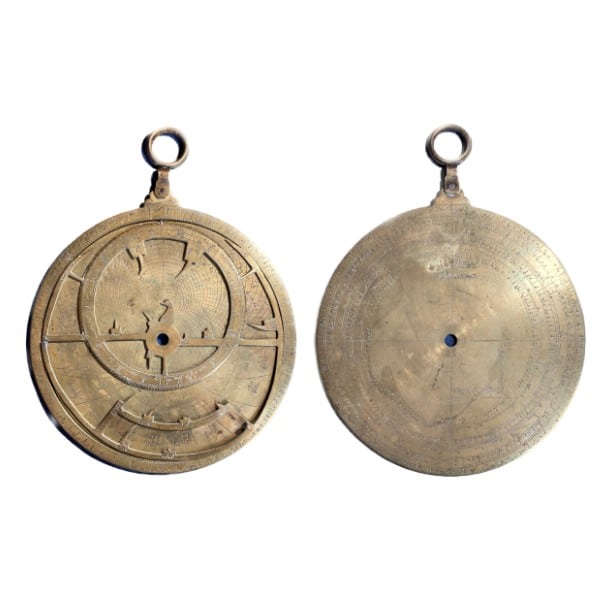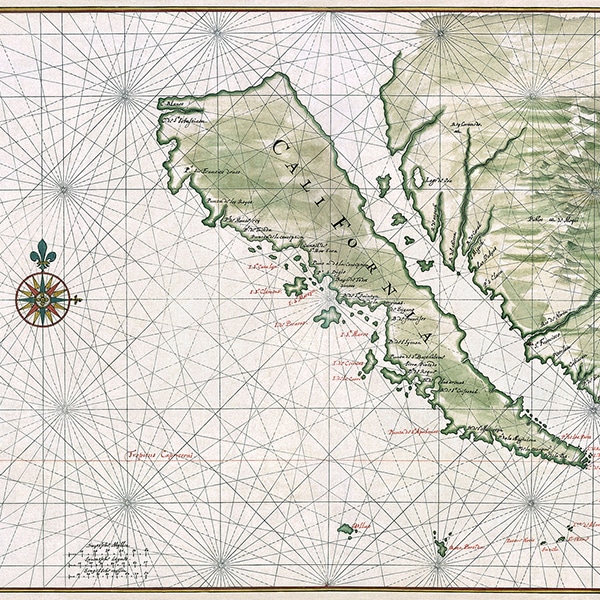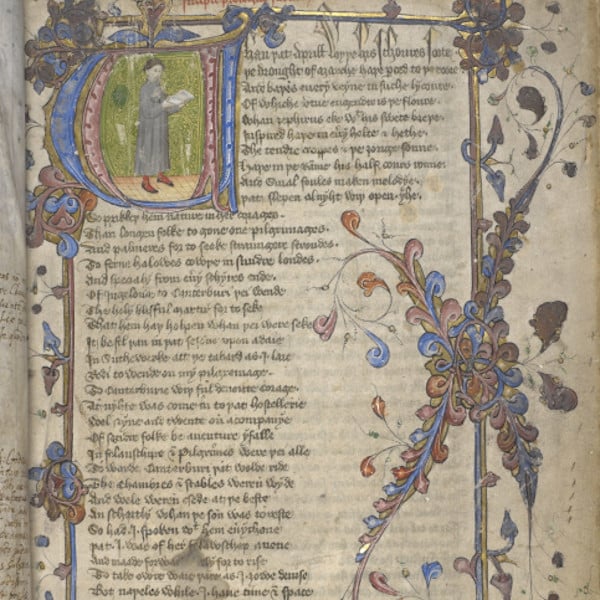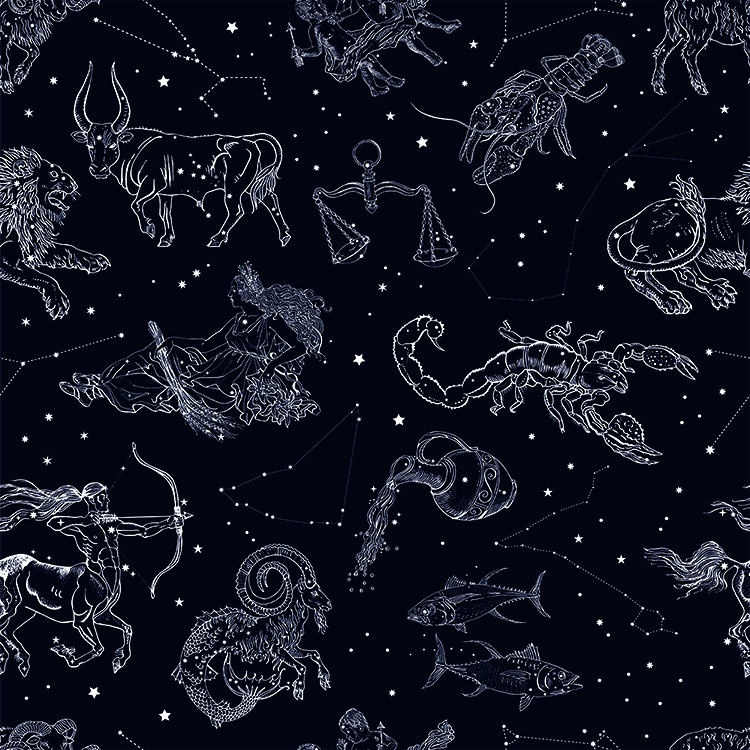
Photo: Stock Photos from Natalia Mikhalchuk/Shutterstock
Do you read your horoscope every morning? Or are you obsessed with star sign compatibility? Whether you believe in astrology or not, humans have been looking to the stars for guidance for thousands of years. Constellation maps existed long before maps of the world. There are even cave paintings, mammoth tusks, and bones marked with lunar phases. For centuries, early civilizations lived in rhythm with nature’s cycles—they hunted, harvested, and migrated with the stars.
Over time, scientific and technological advances allowed us to stop relying so heavily on the sky to predict certain patterns. Astrology became a mere curiosity and a method for gaining more self-awareness. Human beings are narrative creatures, constantly interpreting our lives by weaving together the past, present, and future. Astrology helps us find meaning when we can’t find it anywhere else.
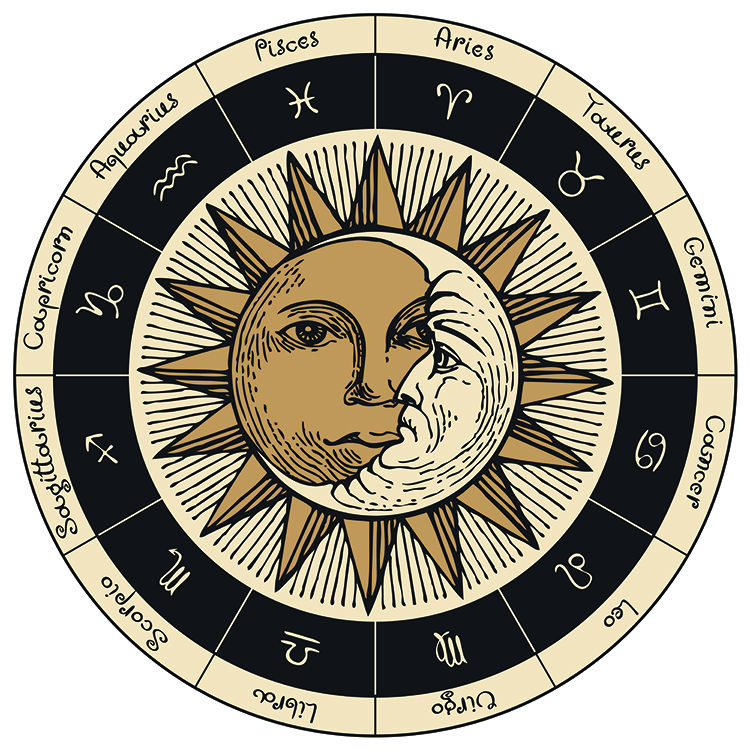
Photo: Stock Photos from paseven/Shutterstock
What is astrology?
Astrology is not a science; there’s no evidence to prove zodiac signs actually correlate with personality. It’s simply a method of predicting earthy and human events based on the placement of the sun, the moon, and the planets within the astrological constellations. There are 12 constellations within the zodiac family: Aries, Taurus, Gemini, Cancer, Leo, Virgo, Libra, Scorpius, Sagittarius, Capricornus, Aquarius, and Pisces.
Your “sun sign” is determined by where the sun was on your birthday. However, the placement of the moon—and each of the other planets at the time of your birth—provide additional insight into your personality and life events, according to your “birth chart.”
Read on to learn about the history of astrology and how it advanced among ancient cultures.
Mesopotamia and the Babylonians

A 6th century mosaic zodiac wheel in a synagogue in Beit Alpha, Israel, incorporating Greek-Byzantine elements. (Photo: Wikimedia Commons, Public domain)
The Sumerians in Mesopotamia—a historical region of Western Asia—were the first to start noting the movements of the planets and stars. In around 3000 BCE, they recorded and identified the prominent constellations and patterns. Within Mesopotamia, the Babylonians (also known as the Chaldeans) became the first great astronomers. Continuing on from the Sumerians’ research, the Babylonians created the first zodiac wheel.
At around the end of the 5th century BCE, Babylonian astronomers divided the ecliptic into 12 equal “signs,” that correspond to the 12 months of the year at 30 days each. Each sign contained 30° of celestial longitude, creating the first known celestial coordinate system. Each segment was often identified by the name of an animal. The Greeks later provided the term for the zodiac when they described it as the zodiakos kyklos, aka “animal circle.”
Hellenistic Egypt
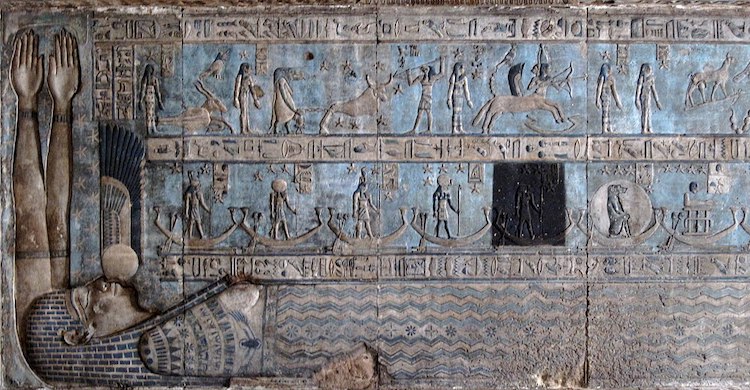
Ptolemaic Egyptian constellations at Dendera. (Photo via Wikimedia Commons, (CC BY 3.0)
After the occupation of Alexander the Great in 332 BCE, Egypt came under Hellenistic rule. In the city of Alexandria—founded by Alexander during the 3rd and 2nd centuries BCE—scholars created Horoscopic astrology by merging Babylonian astrology with the Egyptian tradition of the Decanic zodiac.
This system included the Babylonian zodiac wheel, but incorporated the Egyptian concept of dividing it into 36 sections of 10 degrees each. The Egyptians put emphasis on the rising decan, the Greek system of planetary Gods, sign rulership, and the four elements. In ancient Hellenistic astrology, the calculation of the degree of the Eastern horizon rising against the backdrop of the ecliptic at a specific moment is known as “the ascendant.” In ancient Greek, the word for “ascendant” is horoskopos, which is where the English word “horoscope” comes from.
Early horoscopic astrology was used to plot astrological charts that visualized the positions of the stars, sun, and moon during the moment of a person’s birth. These birth charts were used to read an individual’s character traits, and even their destiny.
Ancient Greece and Rome
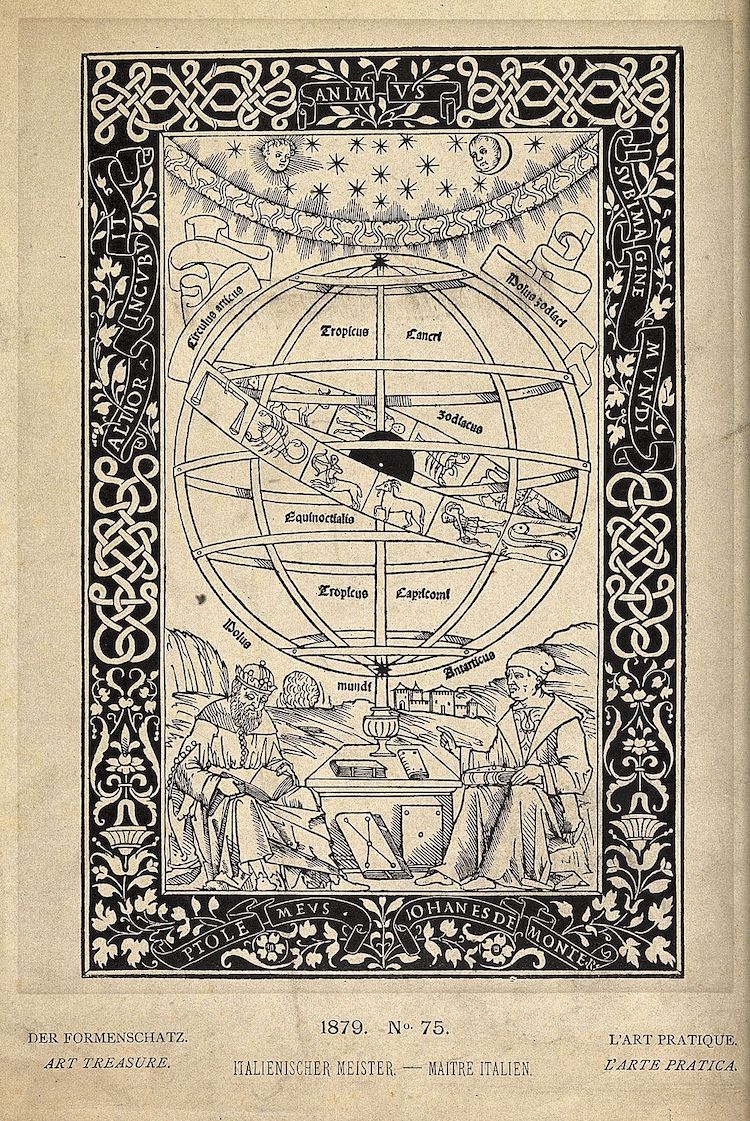
An engraving of Euclid and Ptolemy with a cosmological diagram between them. (Photo via Wikimedia Commons, CC BY 4.0)
In around 280 BCE, Berossus, a priest of Bel from Babylon, moved to the Greek island of Kos in order to teach astrology and Babylonian culture to the Greeks. By the 1st century BCE, two versions of astrology were widely practiced: the reading of horoscopes and theurgic astrology (literally meaning “god-work”). The former sought information on the past, present, and future, while the latter was concerned with the soul's ascent to the stars and personal transformation.
The Greeks played a crucial role in bringing astrological theory to Rome. The first emperor reported to have had a court astrologer was emperor Tiberius, who hired Thrasyllus of Mendes in the 1st century CE. During the 2nd century CE, astrologer Claudius Ptolemy was so fixated with forecasting accurate horoscopes that he began making precise world maps so he could chart the relationship between the person's birthplace and the stars. Before this, maps were mainly illustrative and symbolic, so while in search of astrological meaning, Ptolemy helped develop maps as we know them today. He even coined the term “geography.”
In 140 CE, Ptolemy published Tetrabiblos, one of the most famous astrology books ever written. It explains the key elements of astrology that are still used to this day, including planets, zodiac signs, and houses.
The Rest of the World
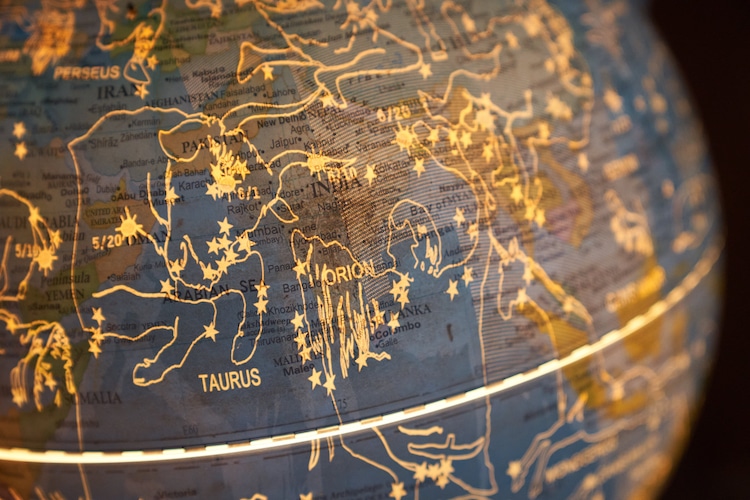
Photo: Stock Photos from Marius Ruhnau/Shutterstock
Astrology became a fundamental part of culture by the Middle Ages, and was practiced by doctors, astronomers, and mathematicians. India and China developed their own versions of the Zodiac, while the Western world favored Greek beliefs.
Advances in mathematics helped astrologers develop more accurate and sophisticated charts, and astronomy was even studied in many esteemed European universities, including Cambridge (1225-50). However, belief in astrology began to decline as the church gained power, and it was seen as an unpopular superstitious belief during the Holy Inquisition. During this time, famous astronomer Galileo Galilei was found guilty of heresy and had to renounce his astrological beliefs in order to save his life.
During the Age of Enlightenment (1650-1780), societies began believing in science over astrological theory, and the practice of reading the stars became a source of mere entertainment. Today, we continue to look to the sky for answers, but we can only ever speculate if our horoscopes will come true.
Related Articles:
25 Dreamy Gifts Inspired by Astrology’s Zodiac Signs
Makeup Artist Creates 12 Stunning Looks for Each of the Zodiac Signs
What is Chinese New Year? Unraveling the History of the Enchanting Festival
Magical Mug Reveals Dazzling Constellations When Filled with a Hot Drink












































































